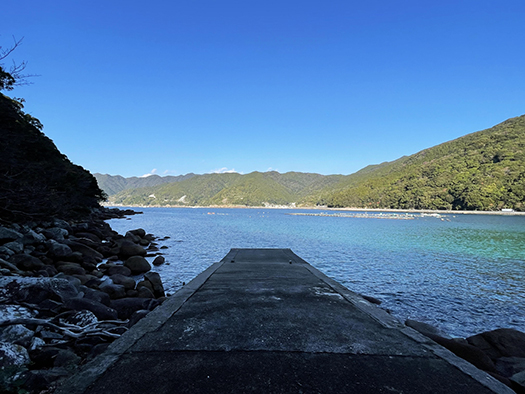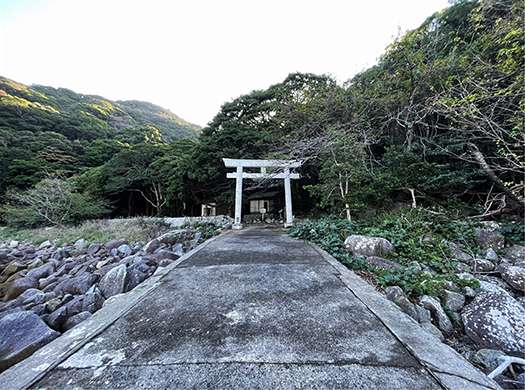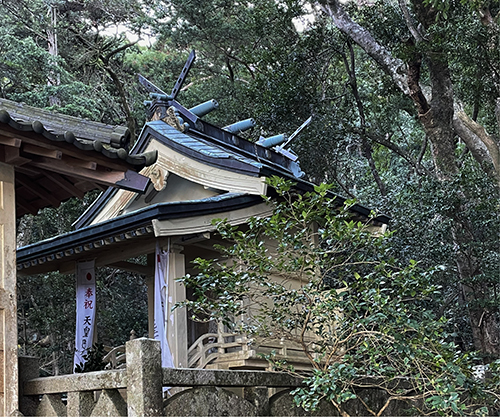


きのう元旦、早起きして北海道神宮参拝・初詣。その後、娘夫婦がやってきて水入らず。ワインで一献して即爆睡。で、目覚めたら能登での地震速報。「大津波警報」で北海道西岸地区にも警報発令。
ことしは台湾総統選挙から始まって米国大統領選挙まで世界の趨勢にとってきわめて波乱含みの年と言われ続けてきていますが、のっけからの地震・津波のアラート。能登は数度訪れてその風土性に強く惹かれている。とくにこの地域の文化資産ともいえる「時国家住宅」には魅了され、このブログでも深掘り的に書いていた因縁もある。知人の方の現地在住のご家族とのやり取りの様子もSNSで知って、リアルタイムの危機進行ぶり。ご無事を祈念。
ということですが、ブログではふたたび住まいと人間の文化史に復帰します。
今回からは「熊野御幸」に特徴的に見られた日本の皇統史の特異地域、熊野探訪であります。とは言ってもいきなり全部をワンテーマとして取り組むのは無理筋なので、息長く、ときどき現地探訪しながら、継続していきたいと考えております。
わたしは京都とか奈良とかの「みやこ造営」以降の日本史にながくとらわれ続け、それはそれで素晴らしい文化史だといまでも思っています。が、奈良県南西部・飛鳥(明日香村を中心とした)の皇統最初期痕跡と接し始めてからは、そのそもそもの「言語感覚」でのその大きな違いに驚かされ、さらに京都移転後の皇統、天皇退位後の上皇たちが繰り返し「熊野御幸」を繰り返し、それを民人も圧倒的に支持していたことに驚かされています。
この飛鳥・大和地域と、さらにその背景を為す熊野について強く興味を持っていたのですが、北海道人としてはその交通の困難もあって、なかなか機会を持てなかった。関西で定宿地点と考える堺からでもクルマで3時間程度は行くだけでもかかる遠隔地。千歳から関空までのフライト2.5時間も考えれば、二の足を踏み続けていました。昔の上皇たちも熊野詣には往復1ヶ月以上掛かっていたという。
昔の皇統の人びとも、天皇在位中には熊野詣はむずかしく、みな退位後、自由な環境になってから、いわゆる「行幸」ではなく「御幸」として詣っている。
世界でも最古の歴史を持つ皇統である日本皇室の最大の存続根拠は「祈る」存在であることが中核なのではないかと思っていますが、そういった点に於いても、この熊野御幸が果たした神威は計り知れない。
写真は「阿古師神社」とその船着き場とおぼしき空間。神武天皇が難波から大和地方を攻略しようとして地元豪族の長髄彦の軍勢によって敗走させられ長躯、熊野にまで迂回して上陸したとされる二木島・楯ヶ崎にある社。
神武天皇は同道した兄たち3人をこの東征で失ったと古事記に記されているけれど、この阿古師神社は楯ヶ崎への山道の途中にあって、兄・三毛入野命(みけいりのみこと)を祀ったとされている。<この稿、明日へ>
English version⬇
Akoji Shrine, which enshrines the elder brother of the Emperor Jinmu.
Kumano is a place of repeated pilgrimages to Kumano by the Japanese imperial lineage, who “prayed” for their people. Even today, it takes about half a day one-way for a person from Hokkaido. We respectfully invite you to visit this historical site. The history of Kumano
On New Year’s Day yesterday, I woke up early and paid a visit to the Hokkaido Shrine. After that, my daughter and her husband came over to spend the day with us. After a glass of wine, I fell asleep immediately. When I woke up, I heard the earthquake warning for Noto. A tsunami warning was also issued for the western coast of Hokkaido.
This year has been said to be an extremely tumultuous year for world trends, starting with the Taiwan presidential election and continuing with the U.S. presidential election, but the earthquake and tsunami alert came right from the start. I have visited Noto several times and have been strongly attracted by its natural beauty. In particular, I have been fascinated by the “Toki-no-Kokoku Jutaku,” which can be said to be a cultural asset of the area, and have written about it in depth in this blog. I also learned through social networking services of an acquaintance’s communication with a family living in the area, and was impressed by the real-time progress of the crisis. I pray for your safety.
But I will return to the cultural history of housing and human beings in my blog again.
Starting this time, we will explore Kumano, a unique region in the history of the Japanese imperial lineage, as characteristically seen in the “Kumano Gokou”. However, it would be impossible to tackle all of them as one theme at once, so I would like to continue this project over a long period of time, visiting the area from time to time.
I have been obsessed with Japanese history since the “Miyako Zokei” of Kyoto and Nara, and I still think it is a wonderful cultural history in its own right. However, after coming into contact with the traces of the first period of the imperial lineage in Asuka (centering on Asuka Village) in the southwestern part of Nara Prefecture, I was surprised at the great difference in the “sense of language” and was further surprised at the repeated “Kumano Gokou” by the imperial lineage after the relocation to Kyoto and by the emperors after their abdication, and the overwhelming support for it among the people. The people overwhelmingly supported it.
I had a strong interest in the Asuka-Yamato region and its background, Kumano, but as a Hokkaido-native, I had not had the opportunity to visit the area due to the difficulty of transportation. Even from Sakai, which is considered a regular lodging point in the Kansai region, it takes about three hours by car to get there. Considering the 2.5-hour flight from Chitose to Kansai International Airport, I had been hesitant to visit Kumano. Even the emperors of the olden days used to take more than a month round trip to Kumano for a pilgrimage.
People of the old imperial lineage also found it difficult to make a Kumano pilgrimage while they were in the emperor’s reign, so after they retired from the throne and became free to do so, they all made the pilgrimage not as a so-called “gyoko” but as a “go-ko” (a visit to the Kumano Shrine).
I believe that the greatest reason for the survival of the Japanese Imperial Family, the oldest historical imperial lineage in the world, is that at its core it is a “praying” entity, and in this respect, the divine authority that this Kumano Gokou has played is immeasurable.
The photo shows the “Akoshi Shrine” and the space that appears to be its landing place. The shrine is located at Tategasaki, Futakishima Island, where Emperor Jinmu is said to have made a detour to Kumano after being defeated by the forces of the local Nagasaruhiko tribe in his attempt to invade the Yamato region from Namba.
It is written in the Kojiki that Emperor Jinmu lost three of his brothers who accompanied him on this expedition, but this Akoshi Shrine was located on the mountain road to Tategasaki and is said to have been dedicated to his elder brother Mikeri no Mikoto. <This article will be written tomorrow.
Posted on 1月 2nd, 2024 by 三木 奎吾
Filed under: 日本社会・文化研究







コメントを投稿
「※誹謗中傷や、悪意のある書き込み、営利目的などのコメントを防ぐために、投稿された全てのコメントは一時的に保留されますのでご了承ください。」
You must be logged in to post a comment.